The Real Deal on Black and Blonde Hair: A Stylist’s Survival Guide
Over my years behind the chair, I’ve seen just about every hair trend you can imagine. But there’s something about the bold contrast of black and blonde that just never gets old. It’s a head-turner, for sure. But it’s also one of the most technically demanding looks to pull off correctly, demanding serious respect for the chemistry involved. I’ve guided so many clients through this exact transformation, and let me tell you, it’s never just a quick color job. It’s a full-on project.
In this article
I’ll never forget a client who came in wanting to go from her natural black hair to having big, chunky blonde pieces. She’d seen a photo online and figured it’d be a two-hour thing, tops. My first job wasn’t mixing color; it was managing expectations. We spent almost an hour just talking, looking at her hair, and doing a crucial strand test. Honestly, that chat was the most important part of her entire hair journey. This guide is basically me sharing everything from those consultations, so you can understand the craft before you even book an appointment.
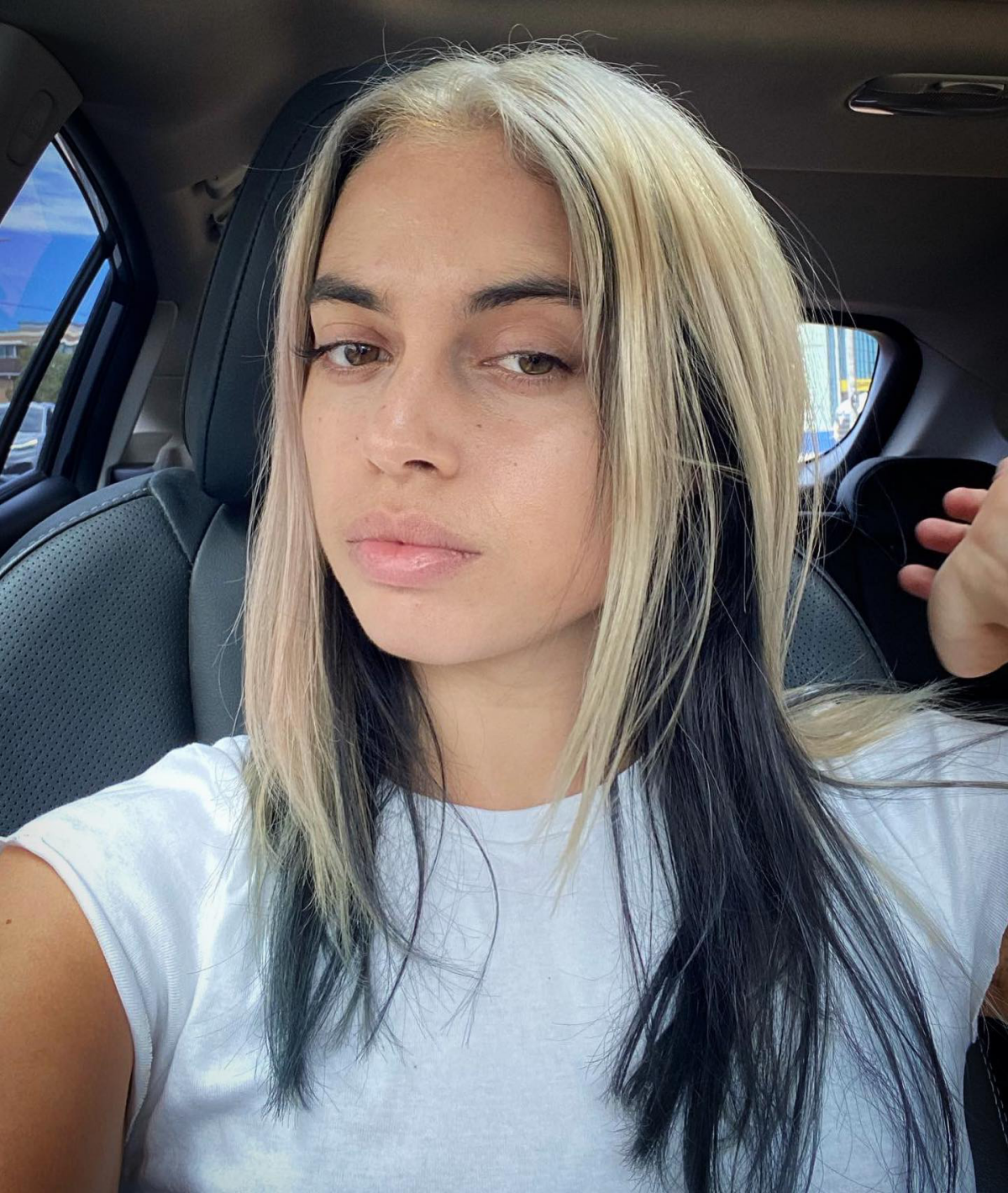
What’s Actually Happening to Your Hair? (The Science Bit)
To really get why this process is so intense, you need to know what’s happening on a microscopic level. It’s not magic, it’s chemistry. And knowing this is what separates a pro from someone just winging it with a box kit from the drugstore.
Think of a hair strand like this: it has an outer layer of protective shingles (the cuticle) and a core (the cortex) where all your natural color pigment lives. In black hair, that pigment is super dense and dark. To get you to blonde, we have to physically remove that dark pigment. It’s a permanent chemical process called lifting.
What you probably call “bleach,” we call lightener. It’s a powder we mix with a cream called developer (which contains hydrogen peroxide). This mix becomes alkaline, which makes those protective “shingles” on your hair swell up and open. This allows the lightener to get inside and start breaking down the dark pigment. The real skill is controlling this reaction to get the perfect shade of blonde without totally frying the hair.
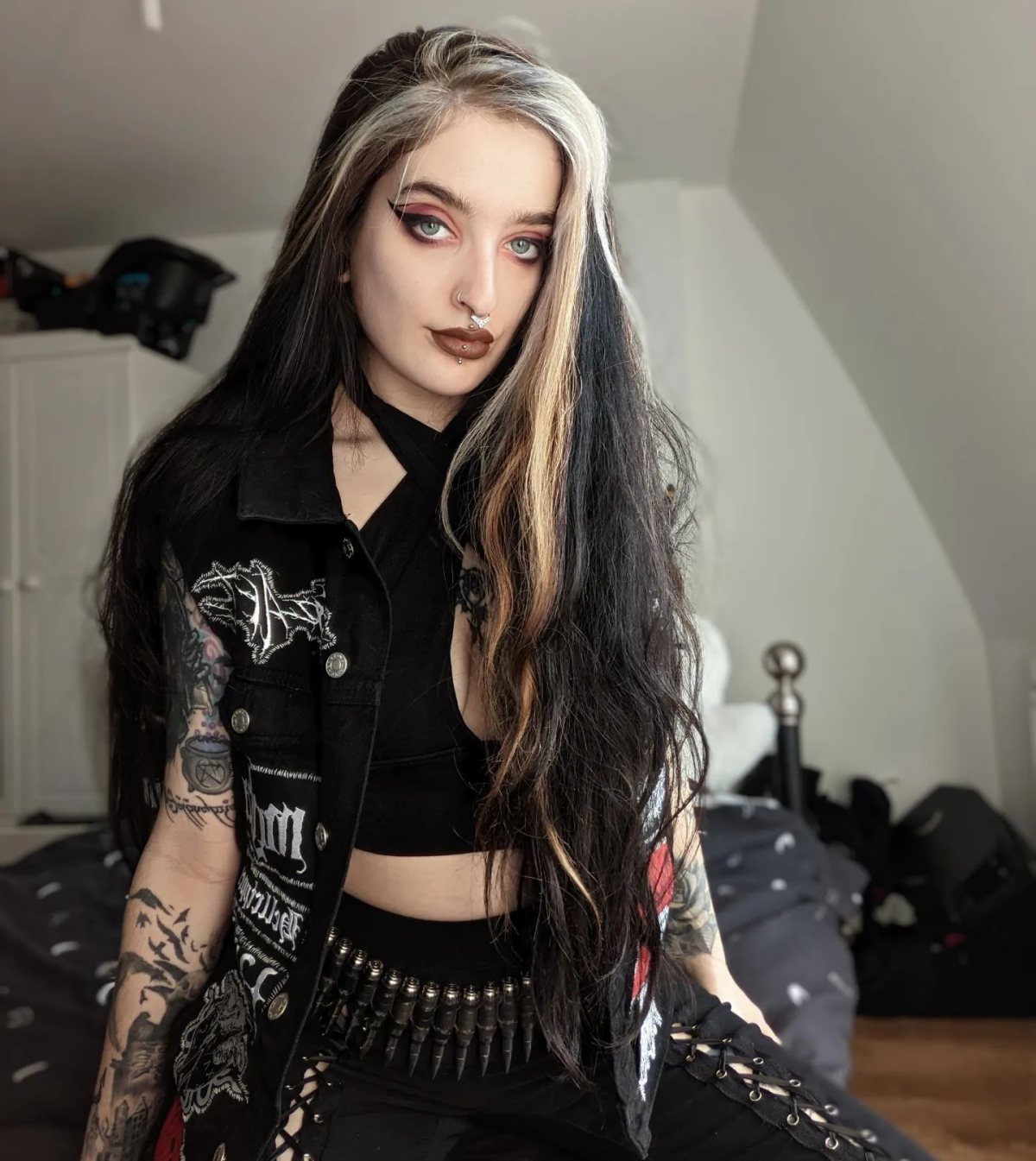
Let’s Talk Developer Volumes
You’ve seen the numbers on the bottles: 10, 20, 30, 40 volume. This just tells you how strong the developer is. Higher number, faster lift… and higher risk.
- 10 Volume: Super gentle. We mostly use this for adding dark color back in (like lowlights) or for toning hair that’s already very light.
- 20 Volume: This is our salon workhorse. It gives a steady, controlled lift and is the standard for applying lightener near the scalp. It gives us time to work without things getting out of control.
- 30 Volume: A bit more kick. I use this for techniques that are off the scalp, like foils or hand-painted balayage, but only on really healthy, dark hair. You have to be super careful with it.
- 40 Volume: Honestly? I barely ever touch this for lightening dark hair. The risk of chemical burns on the scalp and extreme damage is just too high. The heat from your head can speed it up to a dangerous level. Slow and steady with 20 or 30 volume is always the safer, better-looking path.
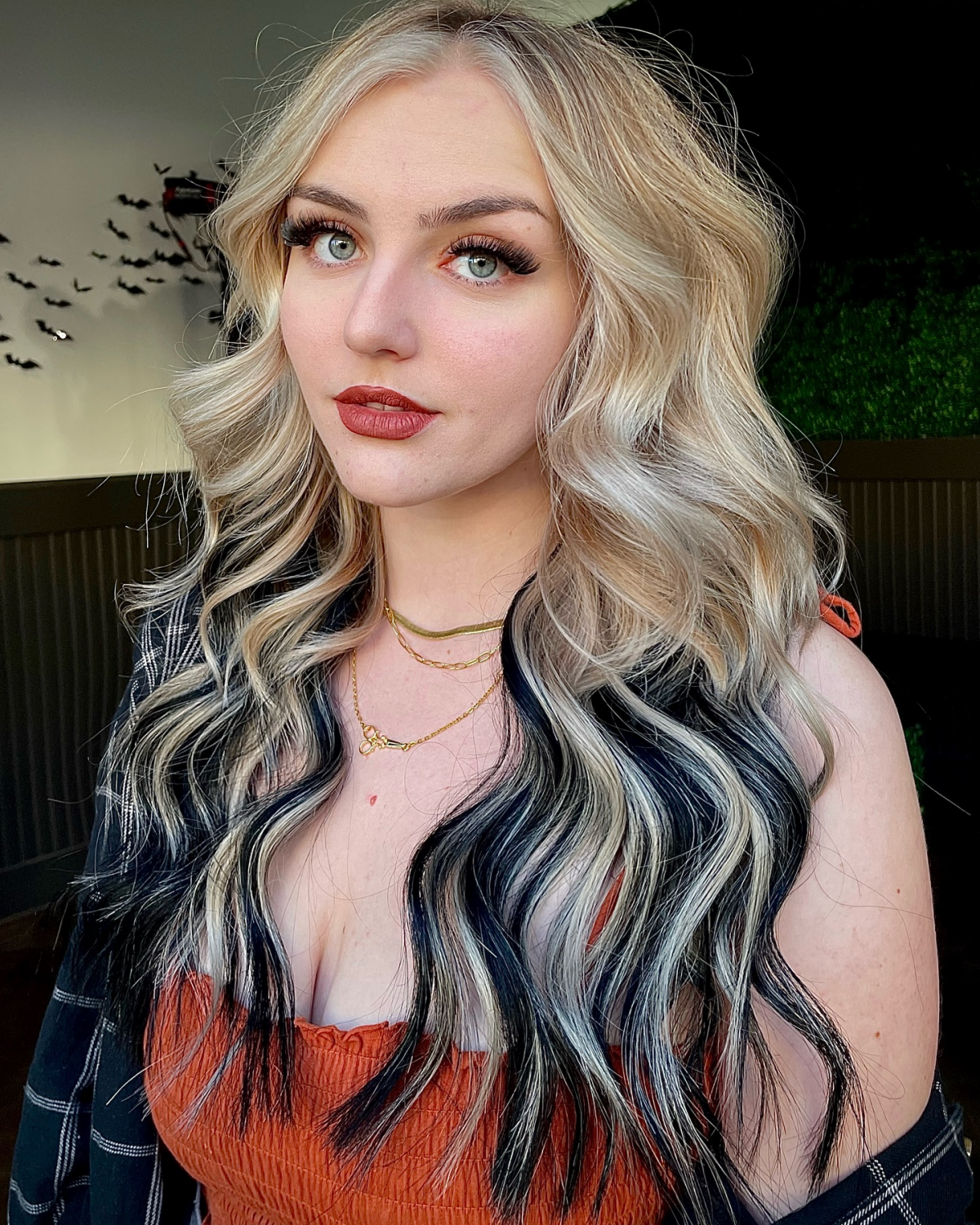
The Brassy Stages You Can’t Avoid
Here’s a hard truth: black hair doesn’t just magically turn blonde. It has to go through several underlying stages of color. It lifts from black, to brown, to red, to red-orange, to orange, to yellow-orange, and finally to a pale yellow (think the color of the inside of a banana peel). A caramel blonde lives in that orange-yellow stage. A platinum blonde needs to get all the way to pale yellow. You can’t fight this process.
Oh, and this is where a toner comes in. Think of toner as a color filter for your hair. After we’ve lifted it to the right stage (say, yellow-orange), we apply a toner to neutralize or cancel out those unwanted brassy tones, leaving you with the beautiful beige, sandy, or icy blonde you actually wanted.
The Consultation: Your Non-Negotiable First Step
Before a single drop of color touches your hair, we need to talk. Seriously. This is the foundation for the entire service. A good colorist is basically a detective, and rushing this part is a rookie mistake.
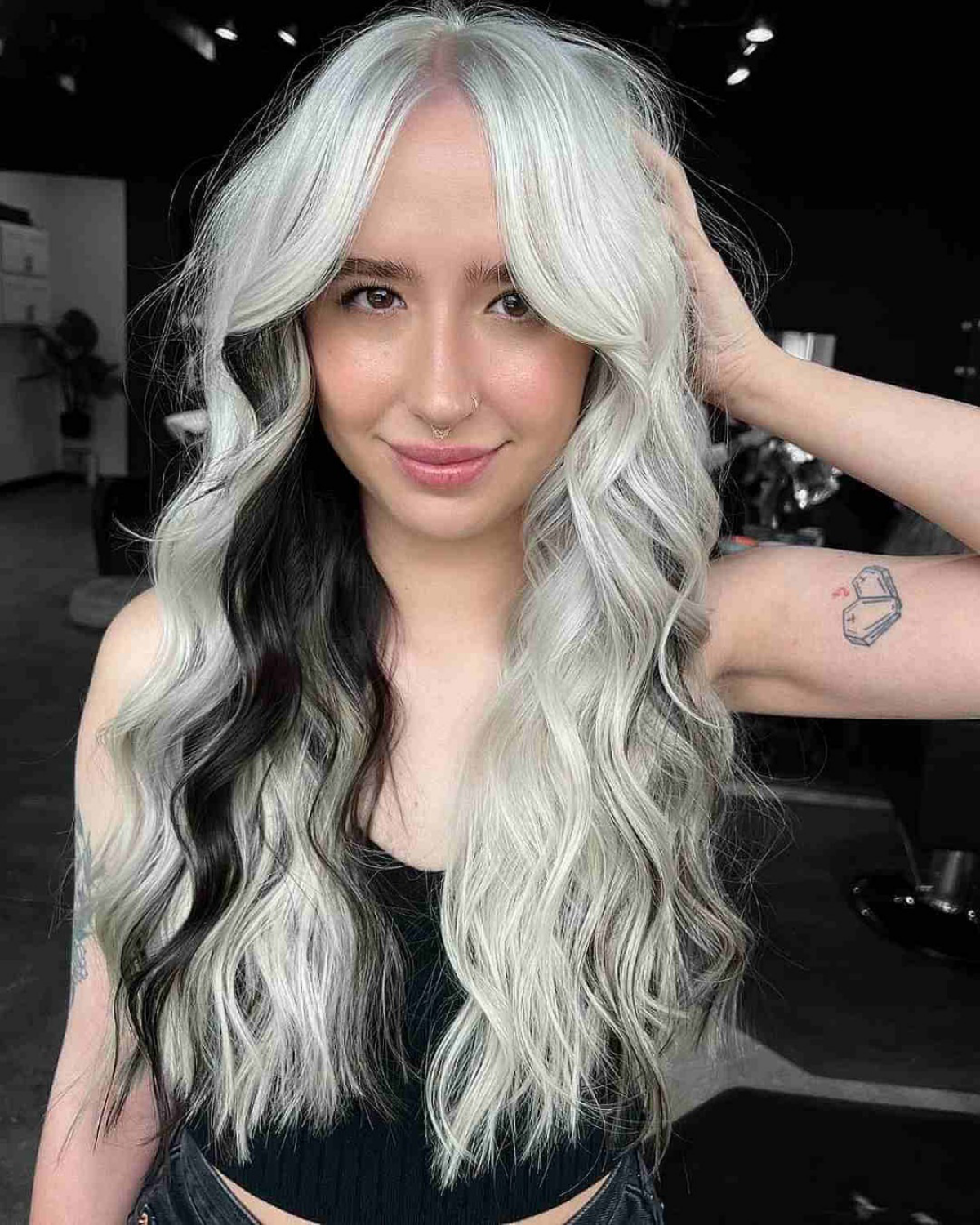
First, I need your hair’s entire life story. Box dye? Henna? A keratin treatment a year ago? You have to tell me everything. Black box dye, in particular, can contain metallic salts that have a violent reaction with professional lightener. I once did a strand test on a client who swore her hair was natural. Within minutes, the test foil started to get hot and literally smoke. The hair inside turned gummy and snapped. An old box dye she’d forgotten about was the culprit. That little test saved her from losing an entire head of hair.
A strand test is your insurance policy. It tells us exactly how your hair will lift, how long it will take, and if it can handle the stress. If a stylist wants to skip the strand test on a major transformation… honestly, that’s a huge red flag.
How to Vet Your Stylist (And Not Get Burned)
Going for a major change is intimidating! So walk into that consultation armed and ready. Here are the questions you should absolutely ask:
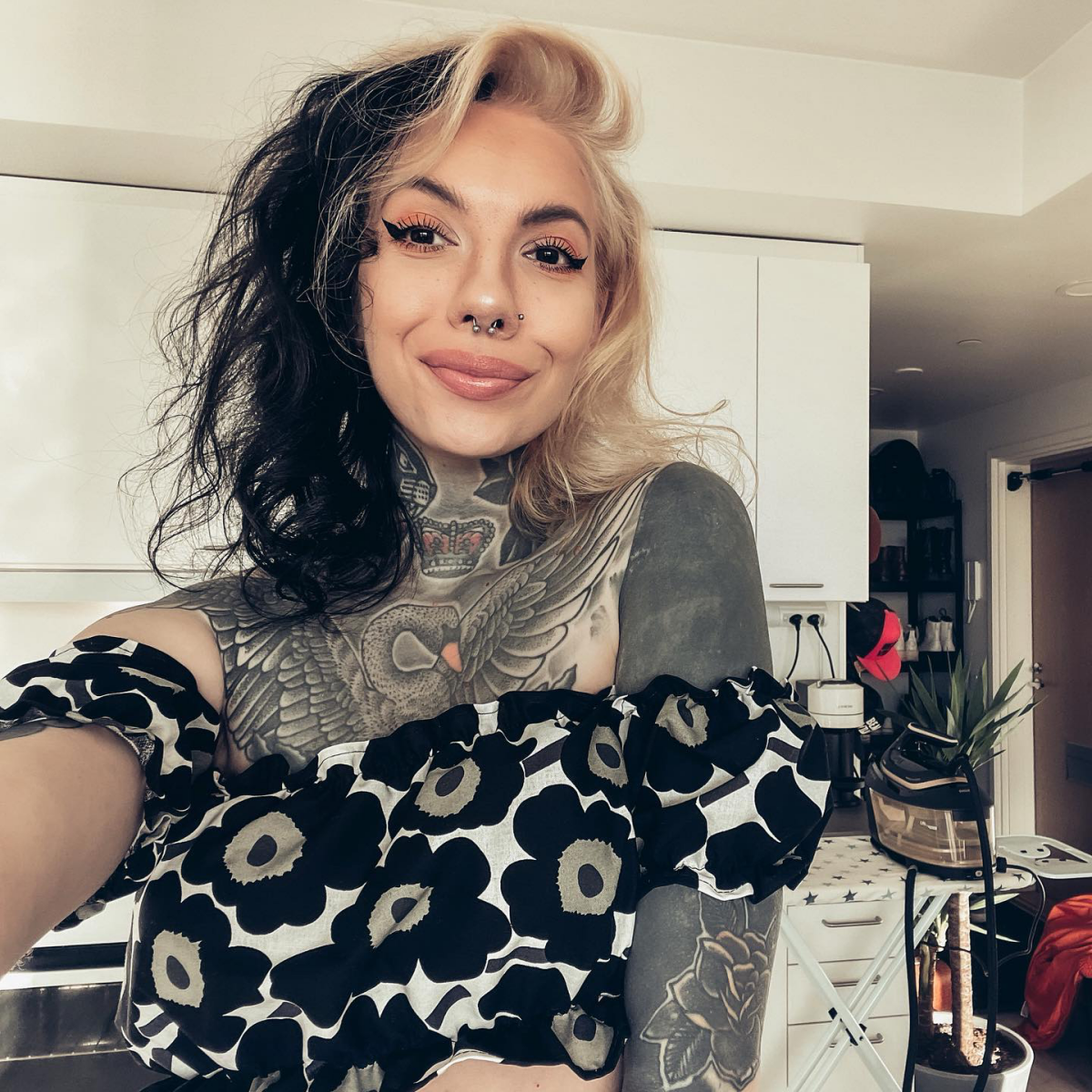
- What is a realistic goal for my hair in one session?
- Can you show me photos of similar transformations you’ve personally done?
- What is the total estimated cost for the first appointment and for the upkeep?
- What specific at-home products will I need to maintain this?
- How many sessions do you think this will take to achieve my goal photo?
And a few red flags to watch for: A stylist who promises platinum blonde from black in one session, anyone who dismisses your hair history (“Oh, that box dye was ages ago, it’ll be fine”), or a pro who wants to skip that all-important strand test. Run.
Choosing Your Style: Let’s Break It Down
Once we have a game plan, it’s time to pick the placement. The technique we use completely depends on the look you’re going for. There’s no one-size-fits-all approach.
- For a blended, natural vibe (Highlights or Foilyage): Classic highlights in foil give you a defined, even lift. For something softer and more “sun-kissed,” we might do a foilyage, where we hand-paint sections but let them process in foil for extra power. This gives you a blended root so it grows out more gracefully. Maintenance is moderate, and you’ll likely be back for a touch-up in 8-10 weeks. Expect the initial session to be in the $400-$650 range and take 3-5 hours.
- For a bold, graphic statement (Split Dye or Chunky Panels): This is your half-black, half-blonde look or those bold “money piece” face-framing streaks. The challenge here is keeping the lines perfectly clean and preventing the black from bleeding onto the blonde when we rinse. This look can actually be a bit easier on the wallet and faster initially since we’re lightening less hair overall, maybe around $300-$500 for a 3-4 hour service. But the root touch-ups are less forgiving and need to be done precisely every 6-8 weeks to keep it looking sharp.
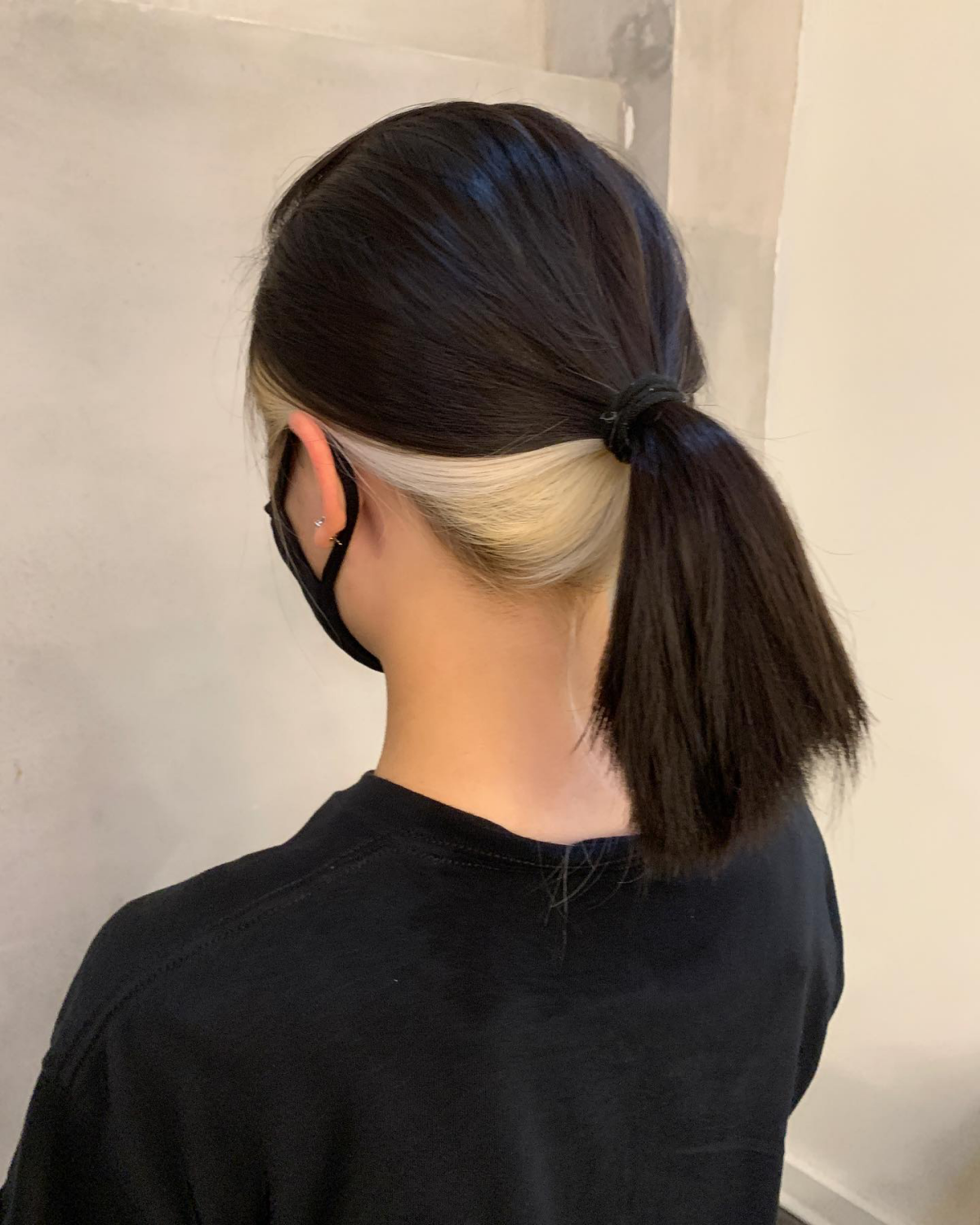
The Ultimate Challenge: Removing Black Box Dye
Okay, let’s talk about the elephant in the salon: hair that’s been dyed with black box dye. I’m always upfront with my clients—this isn’t a standard service; it’s a color correction, and the rules are different. Box dye molecules are stubborn and often build up in dark bands.
The first step isn’t bleach. It’s a specialized color remover that shrinks the artificial dye molecules so they can be washed out. It doesn’t always work perfectly, but it gives us a cleaner slate. From there, we might do a very gentle lightening process. This almost always takes multiple, lengthy appointments spaced weeks apart. The investment is significant, both in time and money. Fixing a home dye job can easily start at $500 and climb well over $1,000 depending on the damage.
Is This a DIY Project? Absolutely Not.
In my professional opinion, please don’t try this at home. The risk of getting it wrong is so, so high. You could end up with spotty, “cheetah” patches, a screaming orange color you can’t fix, or worse, a “chemical haircut” where your hair literally melts and breaks off. I’ve seen it happen.
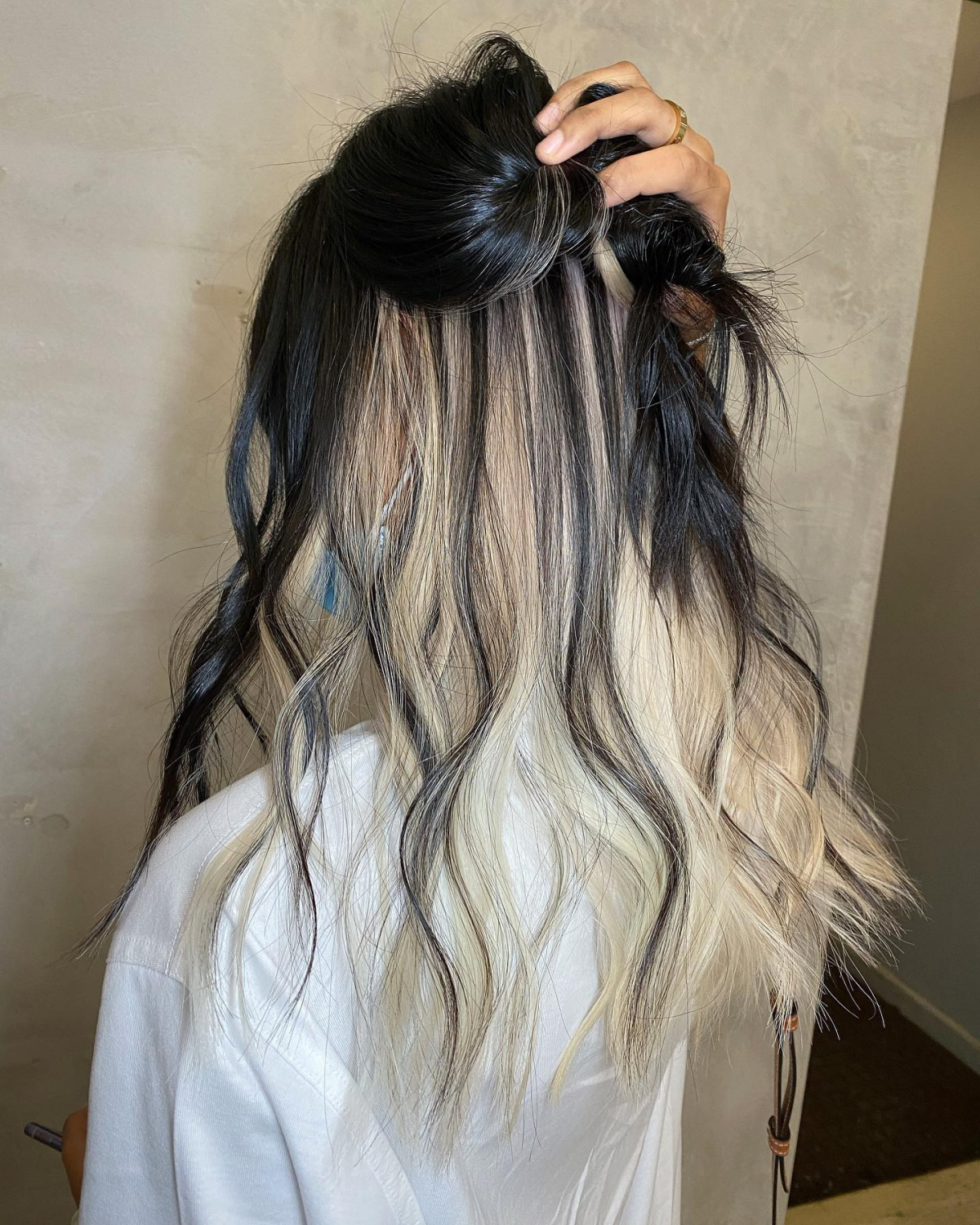
Think of it this way: getting it done right the first time might cost you between $400 and $800. The color correction to fix a DIY disaster? That could easily top $1,000 and take multiple, soul-crushing appointments to fix. It’s just not worth the gamble.
Your New Haircare Bible: Mandatory Home Care
Your job starts the moment you leave the salon. Using cheap drugstore shampoo on hair you just spent a fortune on is like washing a brand new car with dish soap. It just strips everything away.
- Pro-Grade Products Are a Must: You need a sulfate-free, color-safe shampoo. Period.
- Bond-Building Treatments: This is non-negotiable. Products like Olaplex No. 3 or K18 are not just fancy conditioners; they rebuild the broken bonds inside your hair. A bottle will run you between $30 and $60, and it’s the best money you’ll spend. Quick tip for using a treatment like Olaplex No. 3: apply it to damp, towel-dried hair before you shampoo. Let it sit for at least 10 minutes (or longer if you have time!), then rinse it out and shampoo and condition as usual.
- Use Purple Shampoo Wisely: This helps keep yellow tones away, but it’s a tool, not your main shampoo. Use it once a week at most, otherwise it can make your blonde look dull or even purplish.
- Break Up With Your Hot Tools: Or at least see them less often. Lightened hair is fragile. When you must use heat, a quality heat protectant spray is mandatory every single time.

Final Thoughts from the Chair
At the end of the day, creating beautiful black and blonde hair is a partnership. It takes a careful, knowledgeable stylist and an informed, committed client. The result can be absolutely stunning—a true piece of wearable art. But you have to respect the process and prioritize the health of your hair above all else. When you do it right, you’ll have a look you absolutely love, built on a foundation of strong, healthy hair.
Galerie d’inspiration


- Fights brassiness with a professional-grade purple shampoo, but use it sparingly—once a week is plenty to avoid a lilac tint.
- Rebuilds broken bonds with a weekly at-home treatment like Olaplex No. 3 or K18 Leave-In Molecular Repair Mask.
- Locks in moisture and shine with a quality hair oil on your blonde ends, especially after heat styling.
The secret to longevity? This isn’t just a color, it’s a new ritual.
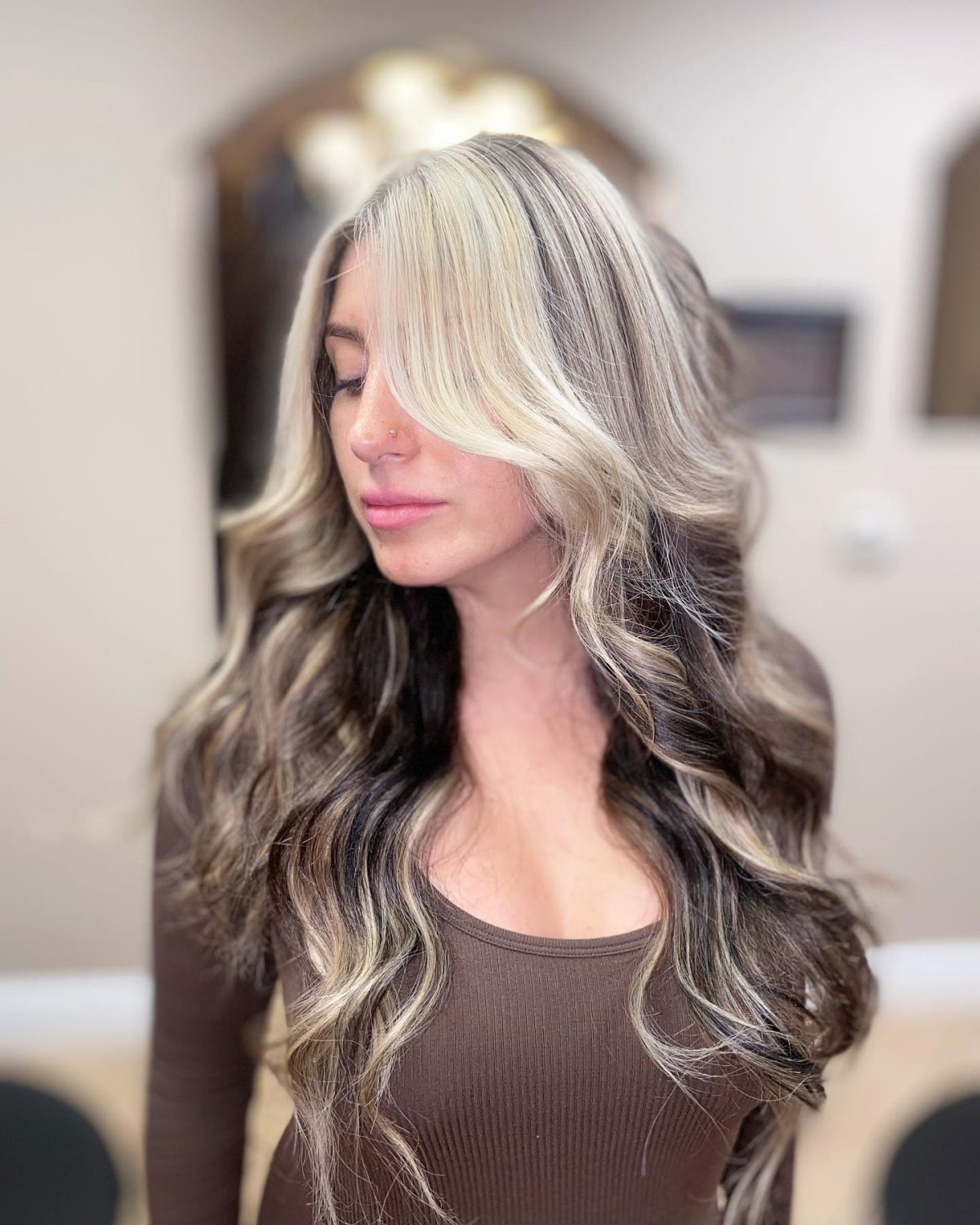
The Money Piece: A bright, face-framing highlight that illuminates your features. It’s a versatile look that can be as subtle or as bold as you like, offering a pop of blonde without a full-head commitment.
The Skunk Stripe: A much chunkier, high-contrast band of color, often placed at the front or as a distinct panel. It’s an unapologetically bold, graphic statement inspired by Y2K and punk aesthetics.
One offers a sun-kissed glow; the other delivers pure drama.
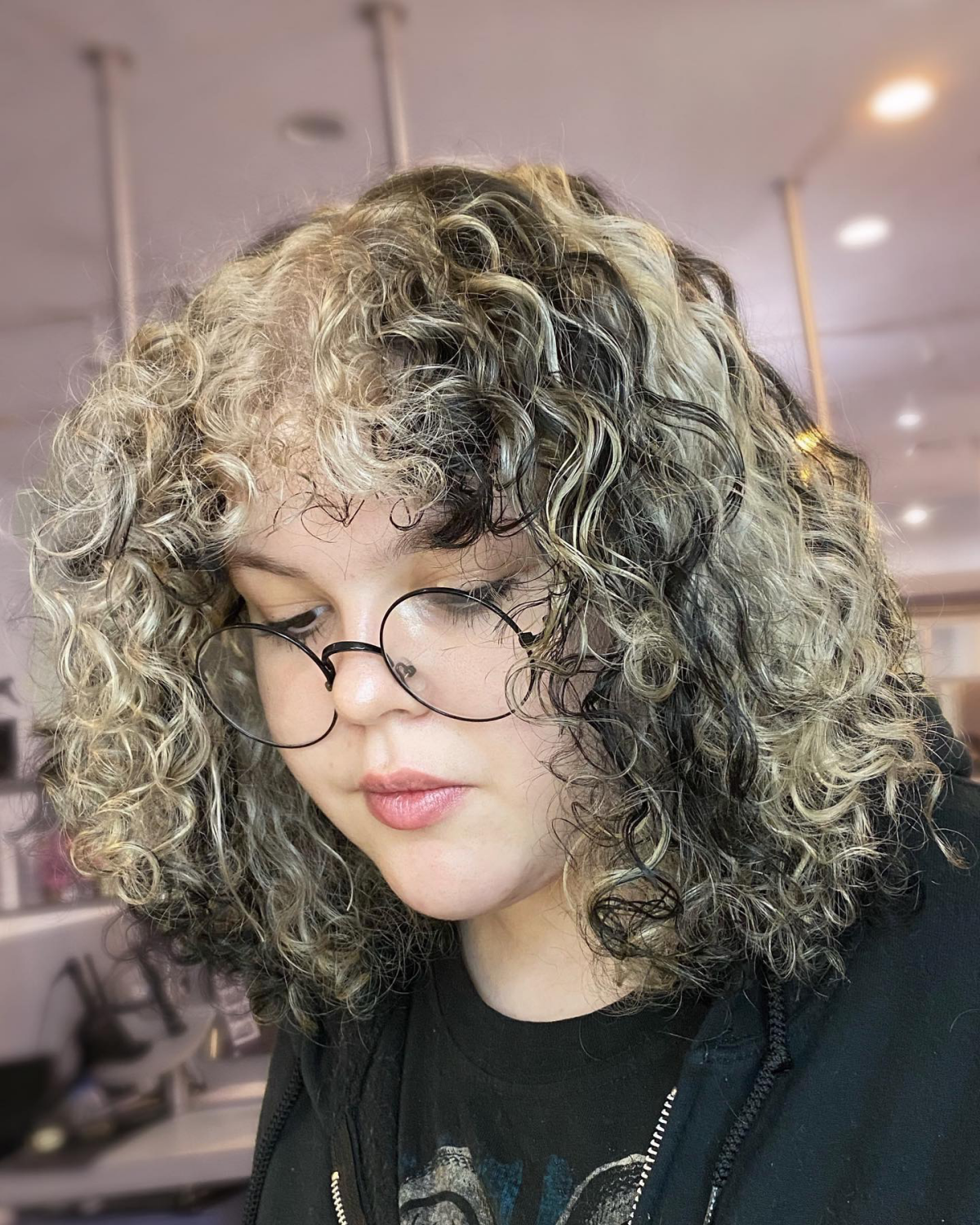
Going from dark to light isn’t a one-and-done deal. Factor in the initial session (which can take 4+ hours and cost upwards of $300-$700 depending on your location and hair) plus mandatory follow-up appointments for toning and root touch-ups every 6-8 weeks.
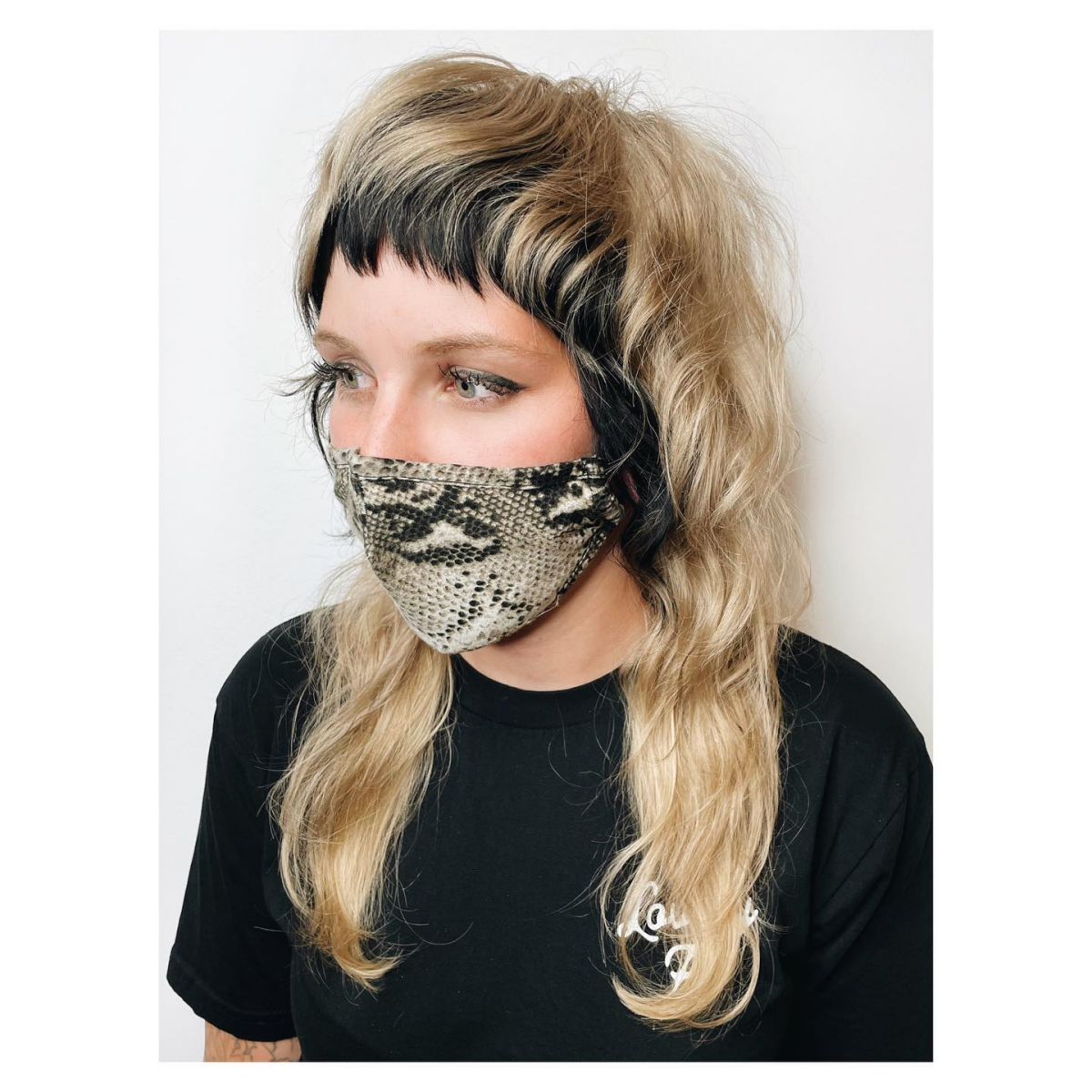
Will my blonde pieces turn yellow or orange over time?
Almost certainly, if you don’t intervene! This is called brassiness, and it happens when the cool tones of the toner used in the salon wash out, revealing the natural underlying warm pigments of your lifted hair. Environmental factors like sun exposure, hard water, and chlorine accelerate this. Your best defense is a blue or purple toning shampoo (like Redken’s Color Extend Blondage) and scheduling regular glossing treatments with your stylist between lightening appointments.
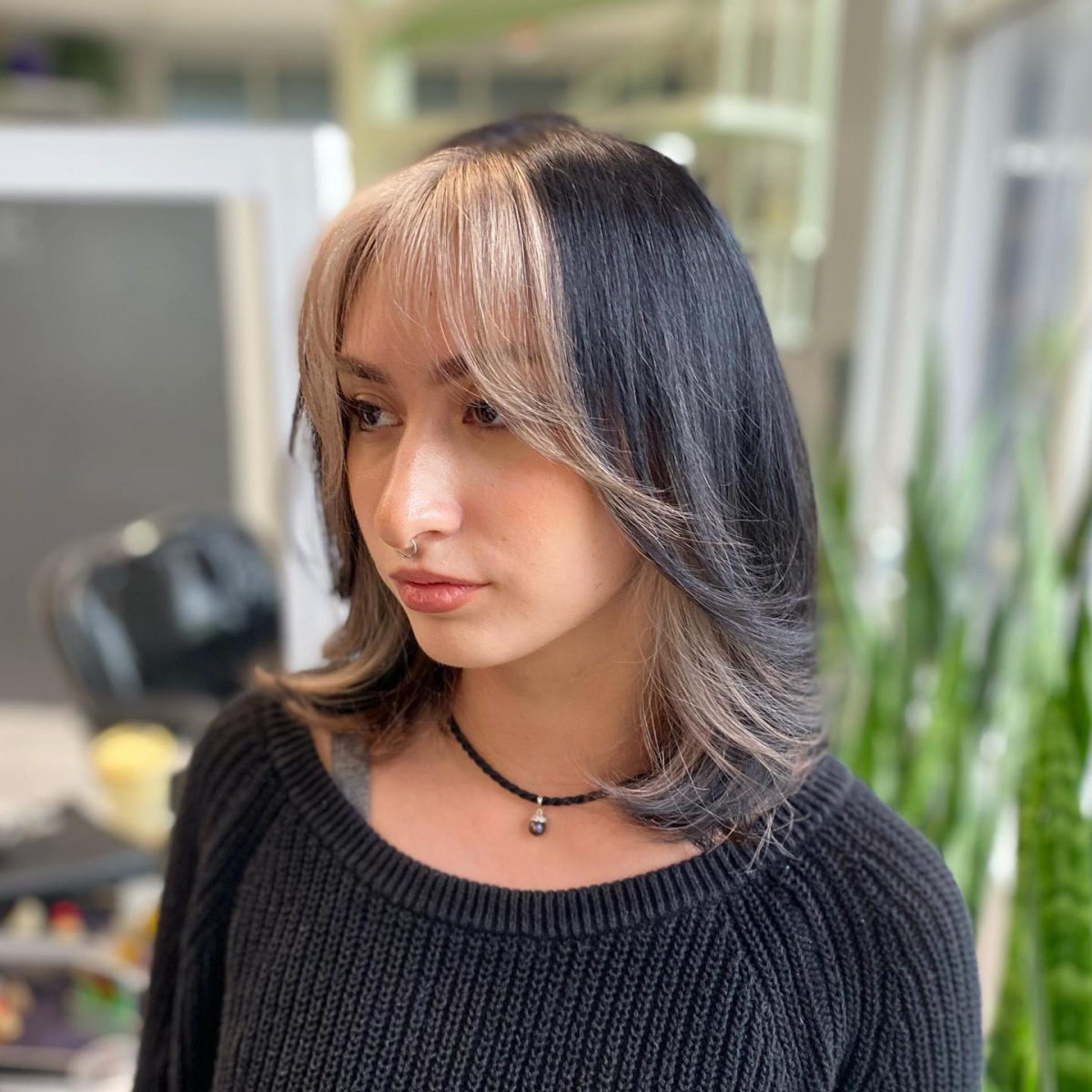
A crucial warning from the pros: Of all the color trends to attempt at home, this is the one to skip. The risk of error when lightening black hair is extremely high. You can end up with patchy, uneven orange color, severe breakage (a ‘chemical haircut’), or even scalp burns from improperly applied lightener. The controlled application and expert judgment of a stylist are essential for protecting your hair’s integrity.
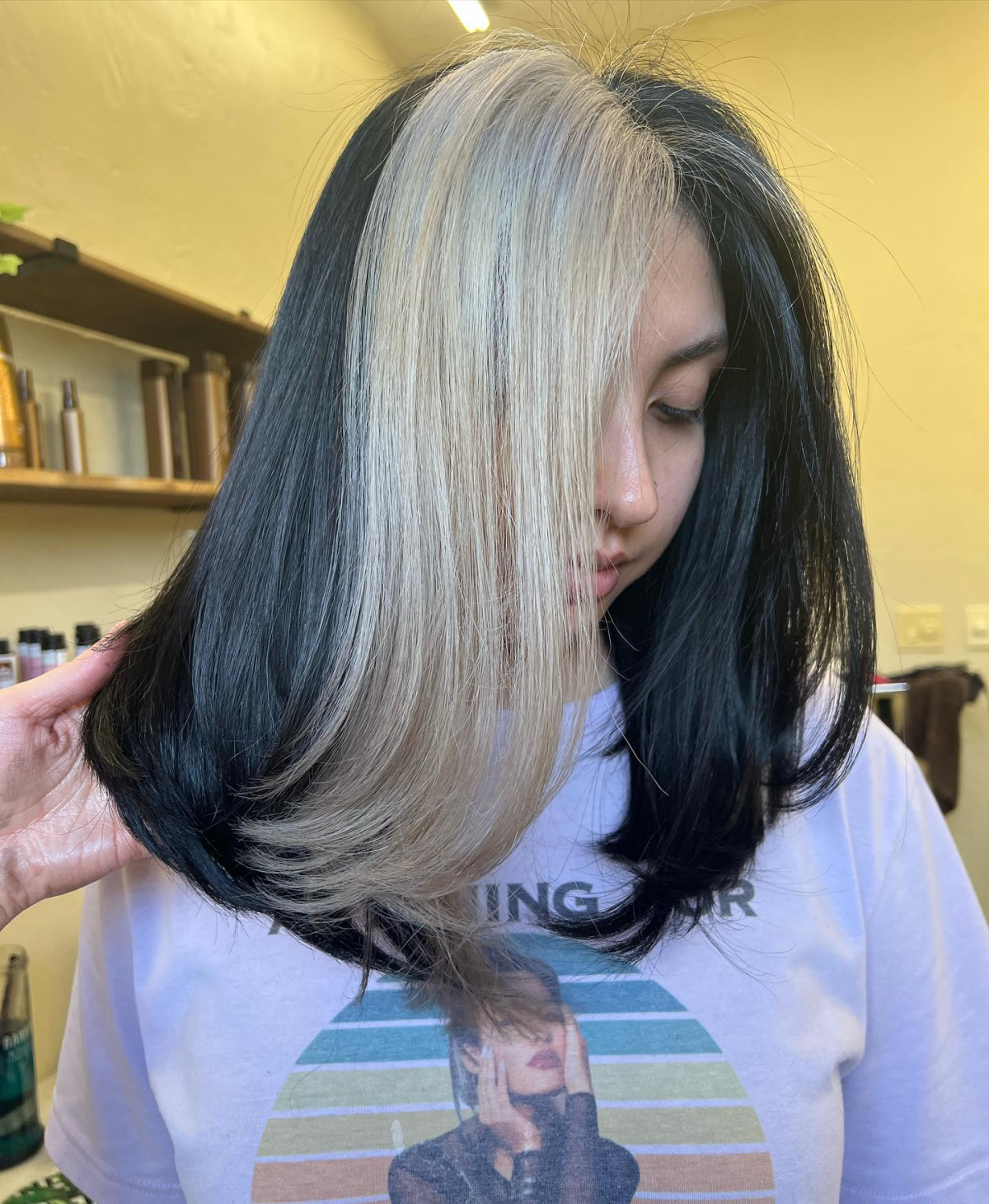
A single strand of hair can contain up to 16 layers of old artificial color. Each layer reacts differently to lightener, creating a ‘color correction’ situation.
This is why a strand test, as mentioned in the article, is non-negotiable. It’s not just about seeing the final blonde; it’s about a stylist understanding your hair’s entire history. That test reveals how your hair will lift, how much damage to expect, and whether the target blonde is even achievable in one session.
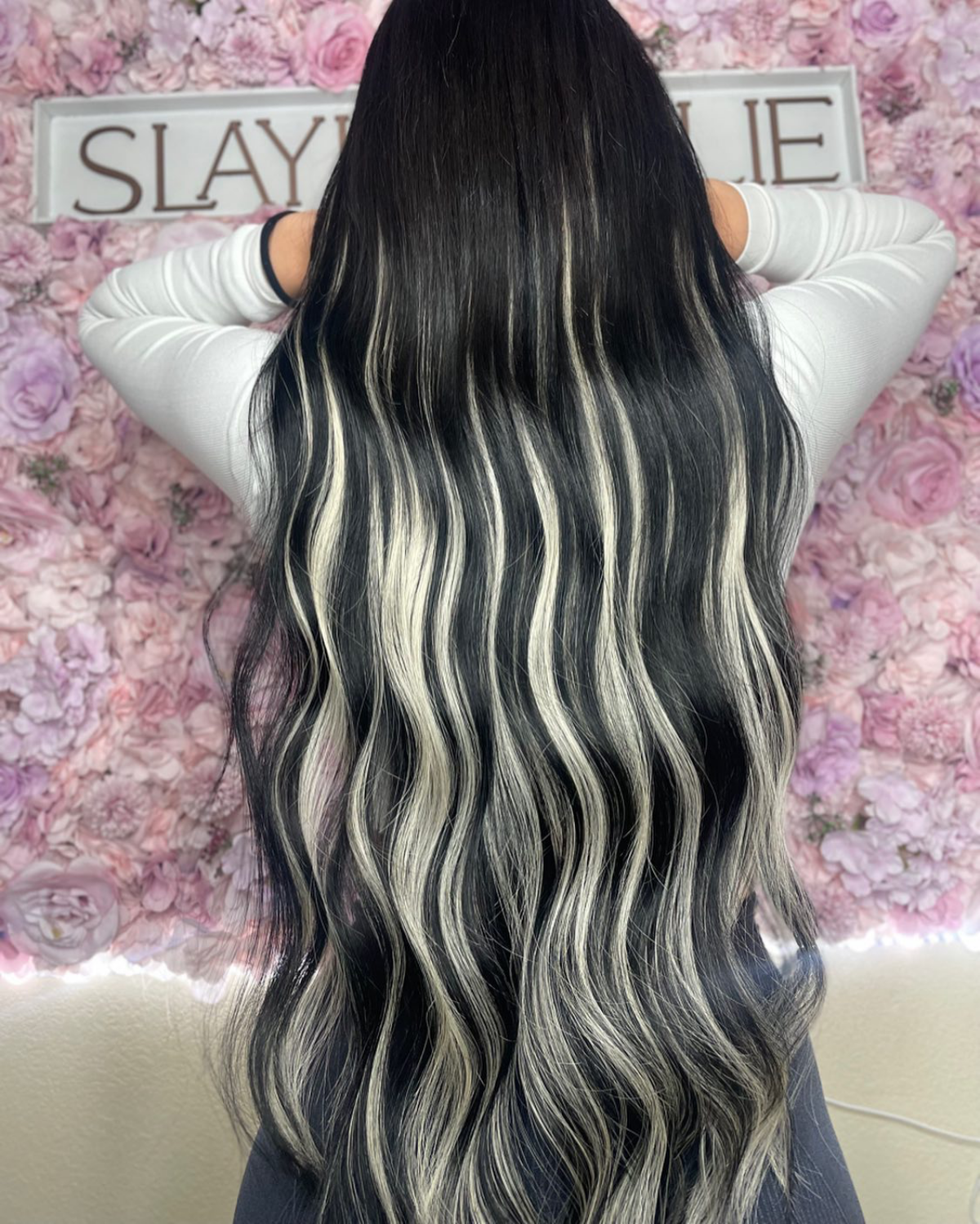
There’s a unique confidence that comes with wearing such a high-contrast look. It’s a deliberate style choice that says you aren’t afraid to stand out. Whether it’s a few artfully placed blonde ribbons or a dramatic half-and-half split, this color combination transforms your hair into a true accessory.
- A beautifully blended, low-maintenance grow-out.
- Adds dimension and movement back into blonde-heavy styles.
- Deepens the base for a more dramatic, high-impact look.
The technique? It’s called a










